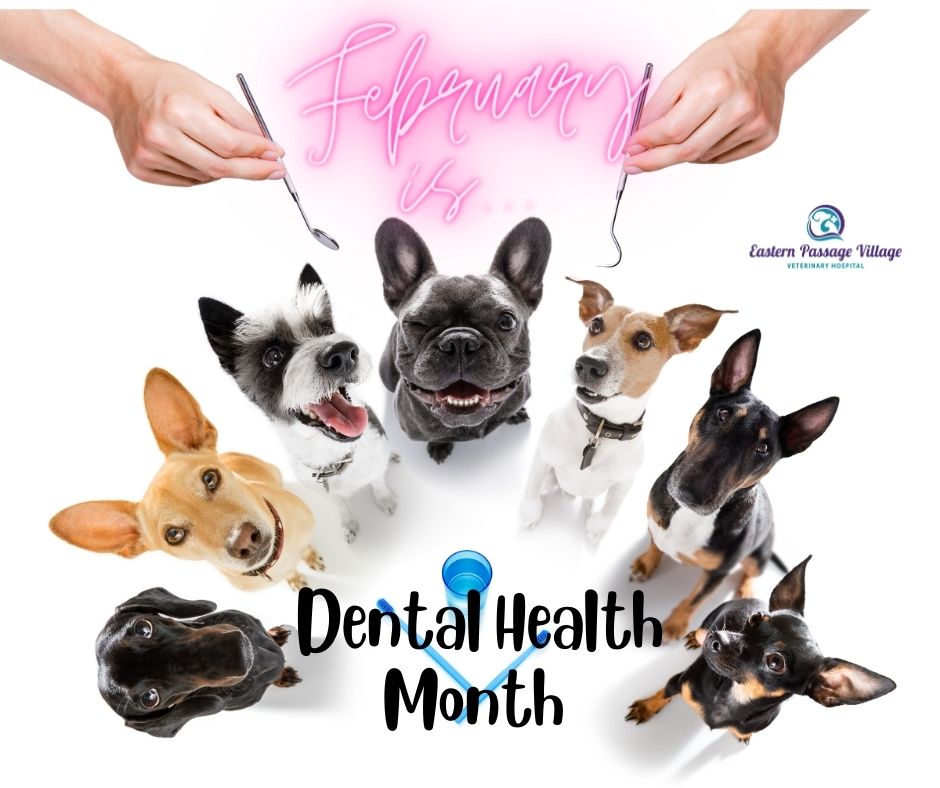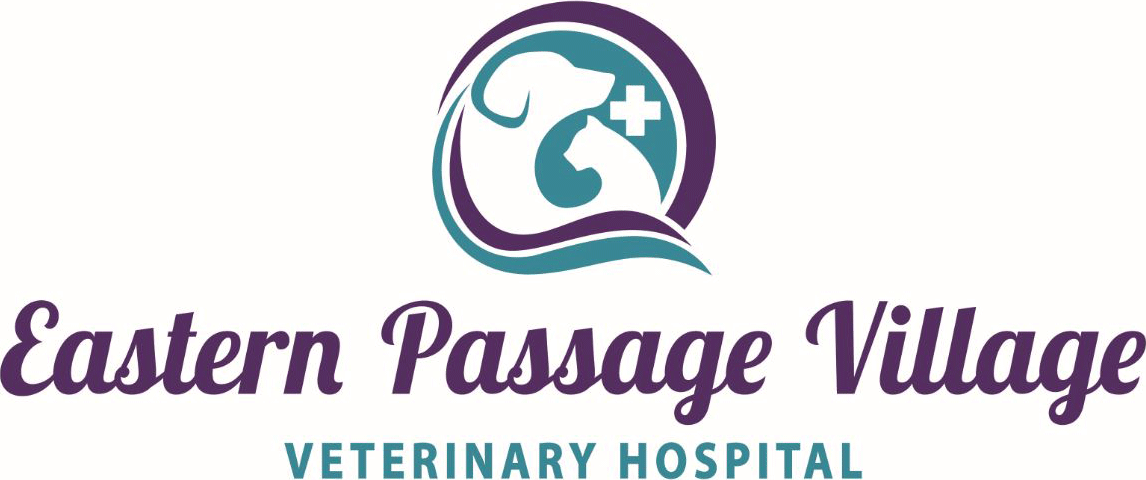
Did you know that our pets get dental disease just like we do? Plaque and calculus buildup, gingivitis, gum erosion and broken and infected teeth are some, but not all, of the common dental concerns that we see in dogs and cats.
Bacteria are attracted to teeth as soon as within hours of being cleaned. The bacteria can buildup, mineralize, and form calculus, which can both damage the tooth and destroy its attachment to the jaw bone (this is called periodontal disease). In even worse situations, periodontal disease can lead to infection which can both directly affect the teeth, as well as spread through the body, causing a variety of further significant health concerns.
Dental disease processes start at a young age – most pets will have periodontal disease by the time that they are 3 years old!
Some of these abnormalities can be noted just from looking into your pet’s mouth. Stinky breath (halitosis), discolored teeth and inflamed gums are obvious signs of dental disease that we can appreciate just by opening the mouth. However, it is important to note that dental disease can also be much more involved than what we see above the gum line.
Just like an iceberg, there is more tooth present below the surface or gum line than there is above. As such, significant disease can be present below the gum line. Because of this, regular dentals with your veterinarian are important as these allow not only for cleaning and polishing of the teeth, but also x-rays and probing/deep examination of the teeth to assess health below the gum line and provide the best medical care for your pet.
What can we do?
There are a variety of health measures that we can undertake to address the dental health of our pets, both at home and with the help of your veterinarian.
Things that you can do at home include tooth brushing, the use of dental chews and treats, and prescription dental diets. Dental wipes and water additives are available for pets that do not like dental treats or tolerate tooth brushing.
Recommended dental health products are those certified by the Veterinary Oral Health Council. This group evaluates dental health products to make sure that they actually do what they claim to do – if the product passes their assessment, it is awarded with a VOHC Seal of Approval. Always look for this seal when choosing dental care products for your pets.
Tooth brushing can be an undertaking, but it is possible to train your pet to tolerate this home care. If you have a puppy or kitten, start getting them used to you touching and handling their mouths at a young age to make this training process as easy as possible. However, if you have an adult dog or cat, though it may take a bit more time and effort, you still can train them to accept tooth brushing! Start slow and take your time – get your pet first to sniff or lick the toothbrush with nothing on it or even a treat on it to get them used to having it in their mouths. Over time you can start using toothpaste and starting to brush the teeth.
There are a variety of shapes and sizes of tooth-brushes, ranging from long ones with handles, to small ones that fit over your finger. You can experiment with the different types to find one that your pet tolerates well. Special toothpastes for your dog or cat are indicated for this; do not use human toothpaste for your pet as some of them may contain products that are toxic to dogs and cats.
Try to perform tooth brushing or give a dental treat each day to provide ongoing dental care for your pets in whatever manner you are able to limit tartar and plaque development and buildup.
There is a common misconception that having your pet chew on bones or antlers is good for the teeth. Though this can technically scrape off calculus, it also runs the risk of fracturing the teeth and leaving us with more problems than we started with. A common rule of thumb is that it is not recommended to give your pets anything to chew on that is harder than what you would be comfortable hitting off of your knee.
What next?
All of this at home dental care is helpful for preventing buildup of tartar. However, it unfortunately is not able to remove tartar once it is present on the teeth. Dental cleanings from your veterinarian are required to remove this buildup.
Dental cleanings and care with your veterinarian are performed under general anesthesia. Unlike humans, dogs and cats will not hold their mouths open upon request from their doctors for x-rays and cleaning (though it would make it a lot easier if they did!). While under general anesthesia, x-rays are taken of the full mouth to assess tooth health below the gum line. A full exam is done of the teeth as well. An exam is always done in dental patients prior to the dental procedure itself, however, much more of the teeth can be assessed when the pet is under general anesthesia. This includes, but is not limited to, assessing mobility of teeth, probing for pocketing around teeth, and assessing calculus buildup with thorough dental charting. Following this, cleaning of the teeth is performed, including calculus removal, scaling above and below the gum line, polishing the teeth, and removing teeth if required.
Sometimes a pet will have a broken or abscessed tooth. In these cases, most commonly the tooth will be extracted. However, some specialty practices can do root canals for pets!
If you have any questions about your pet’s dental health, please reach out and we will be happy to discuss dental exams, dental care, and dental procedures at greater length and more specific to your pet.
References Used
Dental home-care for dogs and cats:
https://veterinarypartner.vin.com/default.aspx?pid=19239&id=4951515
Tooth-brushing and dental prophylaxis in dogs and cats:
https://veterinarypartner.vin.com/default.aspx?pid=19239&catId=102898&id=4951286
Periodontal disease in dogs and cats:
https://veterinarypartner.vin.com/default.aspx?pid=19239&id=4951302
Clinical signs of oral or dental disease in dogs and cats:
https://veterinarypartner.vin.com/default.aspx?pid=19239&id=10183843
Low-stress tooth-brushing for pets:
https://veterinarypartner.vin.com/default.aspx?pid=19239&id=10183843
